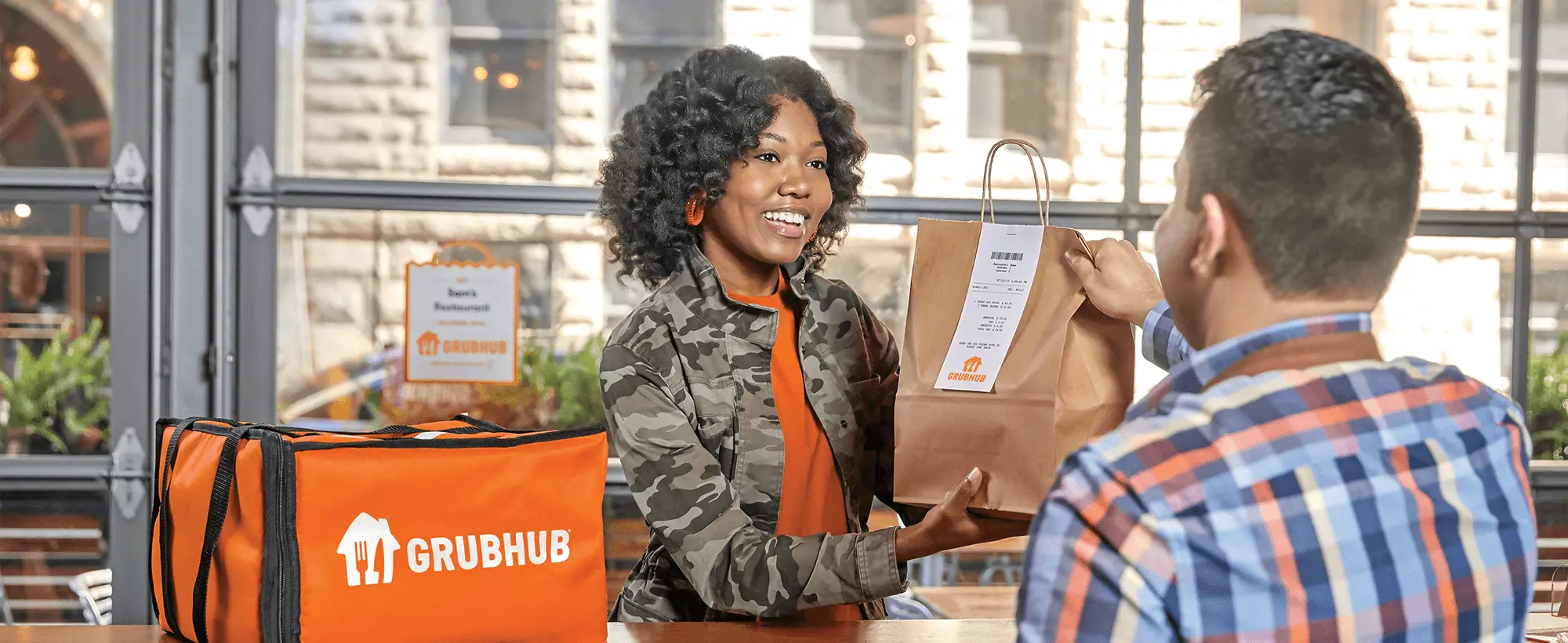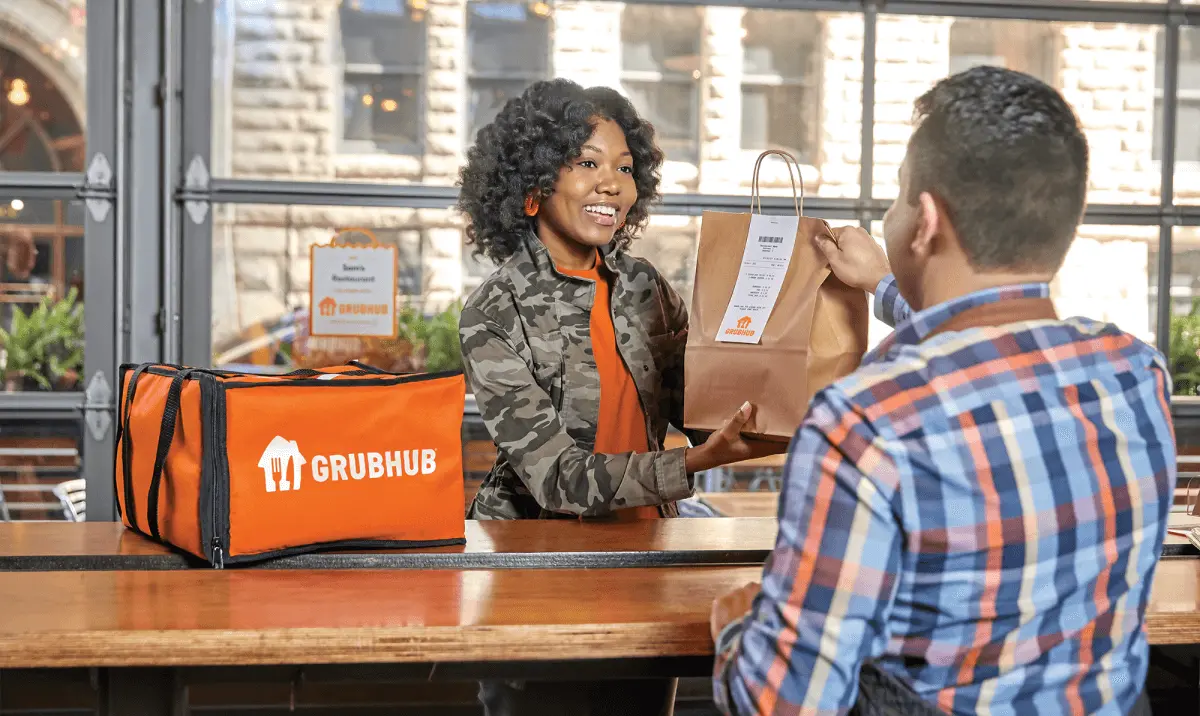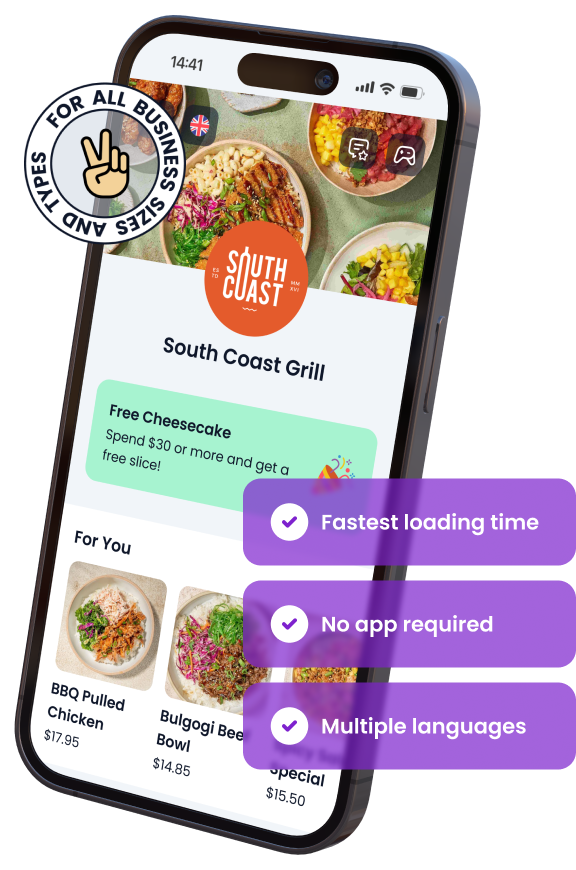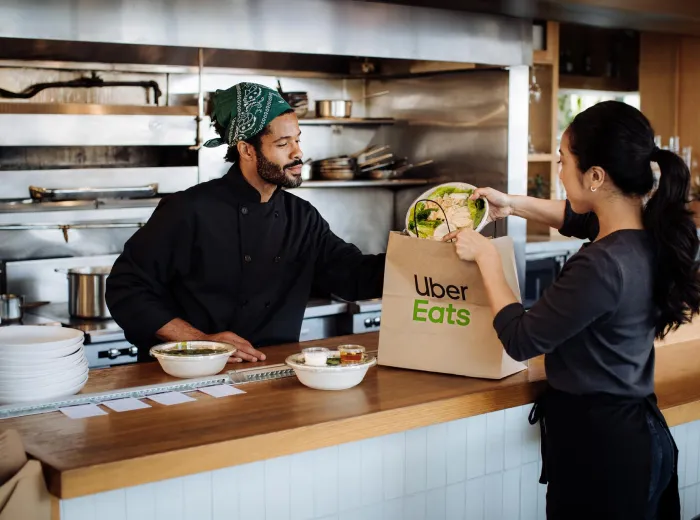

Grubhub Fees and Commissions for Restaurants: Detailed 2025 Guide
Grubhub has become one of the most popular food delivery platforms in the U.S., connecting restaurants with a broad customer base that prefers the convenience of ordering food online. However, while it can boost your restaurant’s reach and sales, the associated fees and commissions can significantly impact your bottom line. Understanding the cost structure is crucial for restaurant owners to evaluate whether Grubhub is the right choice for their business model.
This guide dives deep into the various fees Grubhub charges, from commission rates to marketing tools, helping you make informed decisions. Whether you are already partnered with Grubhub or considering it, this detailed guide will give you insight into how these costs work, what to expect, and how to manage them to protect your restaurant’s profitability.
We’ll explore practical ways to reduce fees, compare Grubhub with other platforms, and provide tips to maximize your earnings while still benefiting from the exposure that Grubhub offers.
Would you like to listen our deep-dive conversation about this article?
What is Grubhub and How Does It Work?
Grubhub is a well-known online food delivery platform that allows restaurants to offer their menus to customers through an app or website. By acting as the middleman between customers and restaurants, Grubhub facilitates ordering, delivery, and payment processing, making it easier for restaurants to reach a wider audience. Let’s break down how Grubhub operates and how it can benefit restaurants.
Overview of Grubhub's Service Model
Grubhub offers a seamless service model that allows customers to:
- Browse through menus from local restaurants
- Place orders directly through the platform
- Choose between delivery or pickup options
- Pay online using a secure system
For restaurants, Grubhub acts as a third-party service that:
- Manages orders via the app or web interface
- Handles payment processing, including credit card fees
- Offers delivery services through Grubhub drivers or lets restaurants use their own staff for delivery
Key Benefits for Restaurant Owners
Using Grubhub offers several benefits to restaurant owners, such as:
- Increased visibility: Being on a platform with millions of users helps restaurants attract more customers.
- Ease of use: The platform manages customer interactions, from ordering to payments, simplifying operations for restaurant owners.
- Delivery logistics: Restaurants can outsource delivery to Grubhub, reducing the need to maintain their own fleet of drivers.
- Marketing support: Grubhub offers promotional tools, such as featured listings, to boost visibility.
Types of Restaurants That Use Grubhub
Grubhub serves a variety of restaurant types, including:
- Quick service restaurants (QSR): Fast food chains that benefit from the high-volume, quick-turnaround nature of online orders.
- Full-service restaurants: Offering delivery or pickup through Grubhub enables sit-down restaurants to reach a broader audience.
- Ghost kitchens: Restaurants that operate only for delivery, using platforms like Grubhub to manage orders without a physical storefront.
- Cafes and coffee shops: Smaller establishments that offer light meals and drinks can use Grubhub to expand their customer base.
Customer Behavior on Grubhub
Customers using Grubhub typically:
- Order frequently: Many users turn to Grubhub regularly for meals, especially lunch and dinner.
- Expect convenience: Customers appreciate the ability to browse multiple restaurant menus and make quick decisions based on reviews and menu options.
- Look for deals: Promotions, free delivery, and discounts play a significant role in influencing where customers choose to order from.
Understanding how customers behave on Grubhub can help restaurants better position themselves to maximize orders and revenue through the platform.
Grubhub Fees Explained
Understanding the different types of fees associated with Grubhub is essential for restaurant owners to accurately calculate the cost of using the platform. Grubhub charges various fees based on commission rates, services, and additional options that restaurants may opt into. Let’s explore the different fees in detail.
Standard Commission Rates
Grubhub’s standard commission rates are a percentage of each order, which can range from:
- 15% to 30% for delivery orders depending on the service package selected by the restaurant.
- 10% to 15% for pickup orders, as these don’t involve delivery logistics but still use the platform’s marketing and payment processing.
These commission fees are deducted from each order, making it important for restaurants to calculate their profit margins accordingly.
Marketing Fees
Grubhub offers various marketing options that can increase visibility, but they come with additional fees:
- Sponsored Listings: Restaurants pay an additional fee to appear at the top of search results on the platform.
- Boost Promotions: Restaurants can pay for promotions like “$5 off your first order” to encourage new customer acquisition.
- Featured Listings: Grubhub charges an extra fee to highlight a restaurant’s menu in prominent places on the app or website.
While these marketing tools can drive sales, they also add to the overall cost of using the platform.
Delivery Service Fees
Grubhub offers two delivery options:
- Grubhub Delivery: If a restaurant uses Grubhub’s delivery drivers, they pay an additional delivery fee, typically included in the total commission.
- Self-Delivery: If a restaurant uses its own delivery drivers, they can reduce delivery fees but still pay Grubhub for the order processing and platform usage.
Choosing the right delivery option can significantly impact your expenses.
Payment Processing Fees
Every order placed through Grubhub incurs a payment processing fee:
- 2.5% to 3% per transaction for credit card processing.
- A flat fee per transaction, usually between $0.30 and $0.50.
These fees cover the cost of handling online payments securely but can add up, especially for smaller orders.
Cancellation and Refund Fees
In cases where an order is canceled or refunded, Grubhub still charges the restaurant:
- Partial commission fees if the cancellation happens after the order is placed but before it’s prepared.
- No refund of marketing fees for canceled or refunded orders that were promoted through paid listings or boost programs.
It’s important to factor in potential losses from cancellations when evaluating Grubhub’s fee structure.
Optional Premium Packages: Are They Worth It?
Grubhub offers premium service packages that come with additional features:
- Lower commissions on orders in exchange for higher upfront fees.
- Enhanced marketing tools, such as higher visibility across multiple regions.
- Customer service enhancements, including faster resolution times and dedicated support.
These packages can be beneficial for high-volume restaurants but may not be cost-effective for smaller establishments.
How Much Do Grubhub Commissions Really Cost?
The real cost of Grubhub commissions can vary greatly depending on the type of orders, the pricing strategy of your restaurant, and the specific plan you have with Grubhub. While commissions are presented as percentages, understanding how they impact your profits requires a closer look at the numbers. Below, we break down the commission structure and how it affects your bottom line.
Commission Structure Breakdown
Grubhub’s commission structure typically includes:
- Delivery commission: 15% to 30% of the total order value, depending on the plan and whether Grubhub provides delivery services.
- Pickup commission: Lower at 10% to 15%, as no delivery is involved.
- Additional service charges: This can include marketing fees and premium services, which add to the overall percentage of commissions.
These percentages may seem manageable on the surface, but when applied to a high volume of orders, they can eat into profits considerably.
Percentage-Based Fees and What They Mean for Profit
Here’s how percentage-based fees impact profitability:
- Small orders: On a $20 order with a 20% commission, the restaurant pays $4 to Grubhub, leaving a smaller profit margin after factoring in food, labor, and overhead costs.
- Larger orders: On a $100 order, a 20% commission would be $20, making the cost of using Grubhub even more noticeable.
For restaurants with slim profit margins, these fees can significantly affect overall profitability, especially if a large portion of their revenue comes from delivery orders.
Examples of Grubhub Commission Costs for Different Orders
To better understand the financial impact, here are a few examples of how much Grubhub commissions can cost:
- Small order example:
- Order total: $25
- Grubhub commission (20%): $5
- Payment processing fee (3%): $0.75
- Net revenue: $19.25 (before accounting for food costs and labor)
- Large order example:
- Order total: $150
- Grubhub commission (20%): $30
- Payment processing fee (3%): $4.50
- Net revenue: $115.50 (before accounting for food costs and labor)
As these examples show, while larger orders bring in more revenue, the commission fees also increase, which can still significantly reduce the overall profitability of each transaction.
These insights reveal that while Grubhub can drive more business, its commission structure means restaurant owners need to carefully evaluate how these costs will impact their profits.
Additional Costs to Consider Beyond Grubhub Fees
While Grubhub’s commissions and fees are the most obvious costs to account for, there are several other expenses that restaurant owners should consider when using the platform. These additional costs can impact your profitability and should be factored into your overall business strategy when offering delivery or pickup services through Grubhub.
Menu Markup for Online Orders
Many restaurants increase their menu prices on Grubhub to offset the platform’s fees, but this strategy has its own implications:
- Price increases: Some restaurants raise their menu prices by 10% to 20% on Grubhub to cover the commission costs.
- Customer perception: While menu markup can help absorb Grubhub fees, it may turn off price-sensitive customers or lead to negative reviews about higher prices online.
- Balancing profitability and competitiveness: Restaurants must find the right balance between marking up prices and staying competitive in a crowded online marketplace.
Adjusting Labor and Inventory for Increased Orders
More orders through Grubhub means adjusting your operations to keep up with demand:
- Labor costs: You may need to hire additional kitchen staff or increase the hours of current employees to handle increased order volume.
- Inventory management: An uptick in online orders means you’ll need to adjust your inventory levels to avoid running out of key ingredients, which can lead to increased food costs if not managed effectively.
While increased orders can lead to higher revenue, it also requires better labor and inventory planning, both of which have additional costs.
Hidden Fees: What Restaurant Owners Should Know
Aside from the visible commissions and service fees, there are other less obvious costs that come with using Grubhub:
- Technology fees: If your restaurant uses specific point-of-sale (POS) systems or integrates third-party tools with Grubhub, there might be additional integration fees.
- Marketing penalties: If you discontinue paid marketing with Grubhub after a promotion, you might experience a drop in visibility, forcing you to reinvest in promotions to stay competitive.
- Customer service costs: Handling order issues such as refunds, complaints, or incorrect deliveries may involve offering customer compensation or discounts, which could further cut into profits.
Restaurant owners need to be aware of these hidden costs to ensure they don’t affect their margins unexpectedly. Grubhub can increase your visibility and order volume, but managing these additional expenses is key to maintaining profitability.
Grubhub’s Marketing Tools and Their Pricing
Grubhub offers a variety of marketing tools that can help restaurants increase their visibility on the platform, attract more customers, and drive additional sales. However, these tools come at a cost, which can quickly add up depending on how aggressively you choose to promote your restaurant. Below, we’ll break down the key marketing tools Grubhub offers and what restaurant owners can expect to pay for them.
Sponsored Listings and Boost Programs
Sponsored Listings and Boost Programs are among the most popular marketing tools on Grubhub, allowing restaurants to appear higher in search results:
- Sponsored Listings: These listings allow your restaurant to be prominently featured when customers search for food in your area. The higher your ranking, the more likely you are to receive orders.
- Pricing: Restaurants pay a fixed percentage of each order, typically ranging from 3% to 10% on top of regular commissions.
- Boost Programs: These programs increase the likelihood that your restaurant will appear in customer feeds, especially during high-traffic times.
- Pricing: Restaurants can set a budget and bidding price for their Boost campaigns, making it flexible but often costing 10% to 20% more per order.
Both options can drive more orders, but they also add a layer of additional expense to each transaction, reducing the overall profit margin.
How Restaurants Pay for Promotions
Grubhub’s promotion tools allow restaurants to offer discounts or free delivery to customers, which can attract new diners:
- Discounted meal promotions: You can offer a flat discount (e.g., $5 off orders of $30 or more) to encourage larger order sizes.
- Free delivery promotions: Restaurants can absorb the delivery fee on behalf of the customer to make their offers more attractive.
Pricing:- These promotions are entirely paid for by the restaurant, meaning you absorb the cost of the discount or free delivery.
- In addition, Grubhub still takes its commission based on the original order total, not the discounted price.
While these promotions can drive new business, they add to the overall cost of using Grubhub’s platform, so it’s important to calculate whether the increased sales will justify the expense.
Calculating ROI for Marketing Fees
Before investing heavily in Grubhub’s marketing tools, it’s important to understand the potential return on investment (ROI):
- Track order volume: Monitor how many additional orders you receive after implementing sponsored listings or promotions.
- Calculate average order size: Determine if the promotions are leading to larger order sizes, which can offset some of the costs.
- Analyze repeat customer rates: Are the promotions attracting loyal, repeat customers or just one-time diners taking advantage of a deal?
ROI Formula:- (Revenue generated from marketing campaign – cost of campaign) ÷ cost of campaign = ROI
- A positive ROI indicates that your marketing investment is generating more revenue than it costs, making the fees worthwhile. However, a negative ROI suggests that the marketing expenses are cutting too deeply into your profits.
Ultimately, Grubhub’s marketing tools can be an effective way to boost visibility and sales, but they come with significant costs. Restaurant owners need to carefully evaluate how much they’re spending on these tools and whether the increased orders justify the expense.
How to Reduce Grubhub Fees for Your Restaurant
While Grubhub can help bring in more customers, the associated fees and commissions can put a strain on your restaurant’s profitability. Fortunately, there are several strategies you can implement to reduce the overall costs while still benefiting from the platform. Below, we explore practical ways to reduce Grubhub fees without sacrificing too much exposure or sales.
Negotiating Lower Commission Rates
Many restaurant owners don’t realize that Grubhub’s commission rates are negotiable, especially for high-volume restaurants. Here are some tips for negotiating better terms:
- Leverage order volume: If your restaurant consistently generates a high volume of orders, use this as leverage to request lower commission rates.
- Long-term partnership: Restaurants that commit to a long-term partnership with Grubhub can often negotiate lower rates in exchange for loyalty.
- Compare platforms: Let Grubhub know if other delivery platforms offer better terms. This could motivate them to reduce your rates to stay competitive.
By initiating these negotiations, you can potentially secure lower commission fees, improving your overall profitability.
Opting for Self-Delivery Options
If your restaurant has its own delivery drivers, opting for self-delivery through Grubhub can reduce your costs:
- Lower delivery fees: When you handle deliveries yourself, you avoid paying Grubhub’s delivery commissions, which can range from 10% to 30% per order.
- More control: Self-delivery gives you greater control over the customer experience, allowing you to ensure that deliveries are timely and handled with care.
- Local areas: Self-delivery is especially useful if your restaurant primarily serves customers within a small geographic radius.
While this approach requires more resources on your end, it can drastically reduce Grubhub’s delivery-related fees, leading to higher profits per order.
Utilizing Grubhub’s Basic vs. Premium Plan
Grubhub offers different pricing tiers, and you can reduce fees by choosing the plan that aligns best with your restaurant’s needs:
- Basic plan: Offers lower commission rates but limits your restaurant’s visibility and marketing support on the platform.
- Ideal for restaurants that want to use Grubhub mainly for existing customers or don’t rely heavily on the platform for marketing.
- Premium plan: Higher commission fees but includes additional features like boosted listings and better marketing tools.
- Consider if the added visibility justifies the cost. Otherwise, opting for the basic plan can reduce your overall fees.
Choosing the right plan can help you balance exposure with cost, ensuring you don’t pay more than necessary for services you don’t use.
Offering Direct Pickup to Avoid Fees
Encouraging customers to use Grubhub’s pickup option instead of delivery can also help reduce fees:
- Lower commissions: Pickup orders generally have a lower commission rate (10% to 15%), as they don’t involve Grubhub’s delivery services.
- Promote pickup: Offer incentives like discounts or free items for customers who choose pickup over delivery to save on commissions.
- Increase direct orders: Use social media or in-house marketing to encourage customers to order directly through your restaurant instead of using third-party platforms.
By shifting more orders to pickup or direct options, you can significantly reduce the fees you pay to Grubhub while still using the platform to attract new customers.
Limiting or Pausing Paid Promotions
While Grubhub’s paid marketing tools can boost visibility, they can also add to your overall costs:
- Monitor performance: Regularly assess whether the marketing fees you’re paying are translating into increased sales and repeat customers.
- Pause when necessary: If you’re not seeing a strong return on investment, consider pausing paid promotions or reducing your budget for them.
- Focus on organic growth: Build customer loyalty through excellent service and quality food, and use free or low-cost marketing strategies like social media.
By limiting or carefully managing your marketing spend on Grubhub, you can reduce the fees and still maintain a strong presence on the platform.
These strategies can help restaurant owners reduce the fees associated with Grubhub and improve profitability while still benefiting from the platform’s reach and convenience.
Comparing Grubhub Fees to Other Delivery Platforms
When choosing the right food delivery platform for your restaurant, it’s important to compare Grubhub’s fees with those of other major delivery services. Each platform has its own pricing structure, benefits, and drawbacks. In this section, we’ll break down how Grubhub’s fees compare to Uber Eats, DoorDash, and Postmates to help you make an informed decision about which platform works best for your business.
Grubhub vs. Uber Eats
Grubhub and Uber Eats are two of the biggest players in the food delivery industry, but they differ in their fee structures:
- Grubhub commission rates: Range from 15% to 30% depending on whether the restaurant uses Grubhub’s delivery services.
- Uber Eats commission rates: Typically range from 15% to 30% for delivery, with an additional 15% for pickup orders.
- Marketing and visibility: Both platforms offer paid promotions, but Uber Eats tends to have more aggressive marketing programs, which come at a higher cost.
Key takeaway: While Grubhub’s fees are comparable to Uber Eats, restaurants with their own delivery drivers might prefer Grubhub for its more flexible self-delivery options, potentially lowering costs.
Grubhub vs. DoorDash
DoorDash is another major delivery platform that competes closely with Grubhub in terms of fees and features:
- Grubhub commission rates: As mentioned, can go up to 30% depending on services used.
- DoorDash commission rates: Typically fall between 15% and 30%, but DoorDash offers a “DoorDash Basic” plan, which provides reduced commissions at the expense of lower visibility.
- Additional fees: Both platforms charge for marketing, and DoorDash offers more premium options, such as DoorDash Drive for larger orders or catering, which may come with additional fees.
Key takeaway: Both platforms offer flexible pricing structures, but DoorDash’s commission rates tend to be slightly more negotiable for high-volume restaurants. However, DoorDash’s paid marketing programs can add to the overall cost.
Grubhub vs. Postmates
Postmates, now owned by Uber, still operates with a distinct pricing model that may appeal to some restaurant owners:
- Grubhub commission rates: Standard 15% to 30% commission structure.
- Postmates commission rates: Similar to Uber Eats, with fees typically between 15% and 30%, depending on whether the restaurant uses Postmates for delivery or pickup.
- Unique features: Postmates focuses heavily on delivery speed and convenience, which can attract customers looking for fast service, but this emphasis may also increase delivery fees for restaurants.
Key takeaway: Postmates offers a competitive fee structure, but with its focus on quick delivery, it may not be ideal for restaurants that prefer slower, more controlled service. Grubhub, on the other hand, offers more flexibility with delivery and pickup options, potentially lowering costs.
Which Platform Offers the Best Deal for Your Restaurant?
Each platform has its own advantages and disadvantages, and the “best” deal depends on your restaurant’s specific needs. Here are some factors to consider:
- Order volume: For high-volume restaurants, Grubhub’s negotiable commission rates and self-delivery options might make it more affordable.
- Marketing support: If you rely heavily on third-party marketing to attract new customers, DoorDash or Uber Eats may offer better promotional tools, albeit at a higher cost.
- Delivery needs: If you already have a team of delivery drivers, Grubhub’s self-delivery option can help reduce costs compared to platforms like Postmates or Uber Eats.
Ultimately, the right platform for your restaurant depends on your business model, customer base, and how much you are willing to invest in delivery and marketing services. Comparing these platforms carefully can help you optimize both costs and revenue.
Is Grubhub Worth It for Your Restaurant?
Deciding whether Grubhub is worth it for your restaurant involves weighing the benefits of increased exposure and sales against the significant fees and commissions the platform charges. For many restaurant owners, the convenience of Grubhub comes with trade-offs, especially when it comes to profit margins. Let’s explore the key factors that will help you determine whether Grubhub is a valuable addition to your business.
Balancing Increased Sales with Increased Costs
While Grubhub can drive more orders to your restaurant, the fees can significantly cut into your profits:
- Higher sales volume: Grubhub’s wide customer base can help increase order volume, especially during peak dining times.
- Reduced profit margins: However, after factoring in the 15% to 30% commission on each order, plus other potential fees like marketing, your net profit per order could shrink considerably.
For many restaurants, Grubhub’s ability to drive sales can be beneficial, but you need to ensure that the increase in order volume compensates for the reduced profit margins.
What Type of Restaurants Benefit the Most from Grubhub?
Certain types of restaurants are more likely to benefit from using Grubhub, based on their business model and customer base:
- Quick-service restaurants (QSRs): These fast-food-style restaurants can handle high order volumes and have slim margins built into their pricing model, making Grubhub’s fees more manageable.
- Ghost kitchens: Restaurants that operate exclusively for delivery, without a physical dine-in location, rely heavily on platforms like Grubhub to reach customers and grow their business.
- Cafes and small eateries: For smaller establishments, Grubhub can provide much-needed exposure to new customers who wouldn’t have discovered the restaurant otherwise.
Restaurants that rely on takeout and delivery, and have streamlined operations, can often absorb Grubhub’s fees better than full-service restaurants with higher overhead costs.
Using Data and Metrics to Measure Success on Grubhub
To determine if Grubhub is worth it for your restaurant, you’ll need to track key performance indicators (KPIs) and use data to make informed decisions:
- Order volume: Monitor how many additional orders you’re receiving through Grubhub compared to in-house or other delivery channels.
- Average order value (AOV): Assess whether customers are placing larger orders through Grubhub, which can help offset the higher fees.
- Repeat customers: Track how many Grubhub users become repeat customers and whether they switch to ordering directly from your restaurant over time.
- Profit margins: Calculate the profit margins on Grubhub orders versus direct orders to ensure that the platform is not eroding too much of your bottom line.
By regularly reviewing these metrics, you can make data-driven decisions about whether to continue using Grubhub or adjust your strategy.
In summary, Grubhub can be a valuable tool for restaurants that rely on delivery, but its high fees require careful planning and consideration. To determine if Grubhub is worth it for your restaurant, weigh the benefits of increased visibility and sales against the reduced profit margins, and make sure to regularly evaluate your performance on the platform using key metrics.
Tips for Maximizing Profit on Grubhub
Grubhub can be an effective tool for increasing your restaurant’s visibility and sales, but maximizing profit requires strategic planning. With high commission rates and fees, it’s crucial to find ways to optimize your operations, marketing, and menu to maintain profitability. Below are practical tips to help you get the most out of Grubhub while keeping costs under control.
Optimizing Your Menu for Delivery
To maximize profits on Grubhub, you need to design a delivery-friendly menu that balances customer satisfaction with cost efficiency:
- Highlight high-margin items: Focus on dishes that are cost-effective to produce but still offer strong appeal to customers. These might include signature items or meals that travel well.
- Simplify your offerings: Limit your Grubhub menu to a selection of your best-selling and most delivery-friendly items. Complex dishes that don’t transport well can lead to negative reviews and increased waste.
- Consider portion control: Offering dishes in smaller, controlled portions can help you reduce food costs and boost profit margins without reducing perceived value.
By curating a delivery-optimized menu, you can reduce operational costs and increase the profitability of each order.
Setting Competitive Delivery Fees
Setting a reasonable delivery fee is key to attracting customers while covering costs:
- Balance affordability with profitability: Offering free or low-cost delivery may drive more orders, but it can hurt your profit margins if not priced correctly. Analyze the cost of delivery and set fees that reflect your expenses while remaining competitive.
- Use delivery promotions strategically: If you offer free delivery promotions, consider doing so for a limited time or for orders over a certain amount to encourage higher ticket sizes.
- Evaluate local competition: Check what other restaurants in your area are charging for delivery and adjust your fees accordingly to stay competitive without sacrificing profit.
Strategic pricing can help you offset Grubhub’s fees while ensuring customers are still attracted to your restaurant.
Managing Customer Reviews and Feedback
Customer reviews on Grubhub can significantly impact your restaurant’s visibility and attractiveness to new customers:
- Encourage positive reviews: Offer small incentives like a free side or discount on the next order to customers who leave positive reviews.
- Respond to negative feedback: Address customer complaints quickly and professionally. Offering solutions, such as a discount or replacement, can help turn negative experiences into positive ones.
- Use feedback to improve: Regularly analyze customer feedback to identify common issues (e.g., packaging problems, slow delivery) and work on improving these areas to boost overall satisfaction.
Positive reviews can lead to more visibility on Grubhub, which helps generate more orders without additional marketing expenses.
Utilizing Grubhub Analytics to Improve Performance
Grubhub provides valuable data that can help you make smarter business decisions:
- Track order trends: Use the platform’s analytics to identify peak ordering times and adjust your staffing and inventory accordingly. This can help you manage labor costs and reduce waste.
- Analyze customer behavior: Grubhub’s data can show which menu items are most popular, allowing you to promote or adjust your offerings based on demand.
- Monitor marketing ROI: Evaluate the effectiveness of paid promotions and sponsored listings to ensure they’re delivering a good return on investment. Pause campaigns that aren’t generating enough sales and reinvest in more successful ones.
Leveraging data from Grubhub’s analytics can help you optimize operations, improve customer satisfaction, and ultimately increase profitability.
Offering Exclusive Deals to Increase Order Volume
Grubhub allows you to create exclusive deals that incentivize customers to order from your restaurant:
- Bundle meals: Offer combo deals or bundled meals that encourage customers to spend more on each order. For example, offer a drink and dessert combo with a main dish at a slight discount.
- Promotions for large orders: Offer discounts for orders over a certain amount to encourage larger purchases, which can help offset the platform’s commission fees.
- Loyalty programs: Consider offering loyalty perks through Grubhub, such as discounts for repeat customers, to build a regular customer base.
Offering strategic promotions can help drive more sales while keeping your profit margins intact.
By following these tips, you can better manage the fees and commissions associated with Grubhub while still benefiting from the platform’s reach. Focusing on menu optimization, competitive pricing, customer satisfaction, and data-driven decisions will help ensure that Grubhub remains a profitable channel for your restaurant.
Frequently Asked Questions About Grubhub Fees
Grubhub’s fee structure can be confusing for many restaurant owners, especially when it comes to understanding how the platform’s various charges affect profitability. To help clarify, here are answers to some of the most frequently asked questions about Grubhub fees.
What Are Grubhub’s Fees for Small Restaurants?
Grubhub’s fees for small restaurants are similar to those for larger establishments, but the impact can feel greater due to lower order volumes. Typical fees include:
- Commission rates: Usually between 15% and 30% for delivery orders.
- Marketing fees: Additional costs if you choose to use Grubhub’s marketing tools, such as sponsored listings.
- Processing fees: Around 2.5% to 3% for payment processing.
For small restaurants with tight margins, these fees can quickly add up. However, there are ways to negotiate lower commission rates or opt for lower-cost service plans.
Do Grubhub Fees Differ by Location?
Yes, Grubhub fees can vary depending on your restaurant’s location. Factors that affect the fees include:
- Geographic region: In some competitive markets, Grubhub may charge higher fees due to higher demand for delivery services.
- Local regulations: Certain cities or states may have fee caps in place, limiting the percentage Grubhub can charge restaurants. For example, during the COVID-19 pandemic, some cities imposed temporary limits on third-party delivery fees to protect small businesses.
Be sure to check whether any local regulations affect your Grubhub fees and adjust your pricing strategy accordingly.
Can Restaurants Pass Grubhub Fees to Customers?
While some restaurants choose to absorb Grubhub fees, others pass them on to customers by:
- Raising menu prices: Many restaurants increase prices on their Grubhub menu to offset the platform’s commission fees.
- Adding a service fee: Some restaurants include an additional service charge for delivery orders to help cover Grubhub’s fees.
Keep in mind, however, that higher prices might deter customers or lead to lower ratings if customers feel they’re being overcharged compared to dining in.
How Do Grubhub Fees Affect Profit Margins?
Grubhub’s fees can significantly impact your profit margins, especially if a large portion of your sales comes through the platform. Here’s how they affect profitability:
- Commission rates: A 20% to 30% commission on every order can drastically reduce your net revenue, especially for low-margin items.
- Additional fees: Marketing fees, payment processing charges, and optional premium services add up, cutting further into profits.
To manage this, many restaurants focus on promoting high-margin menu items on Grubhub and adjusting their delivery pricing to protect their profit margins.
Are There Any Hidden Fees with Grubhub?
In addition to the standard fees, there are a few costs that might not be immediately obvious:
- Marketing program penalties: If you stop using Grubhub’s marketing tools after a promotional period, your restaurant might lose visibility on the platform, leading to fewer orders unless you reinvest in promotions.
- Customer service costs: Handling customer complaints, refunds, or incorrect orders can lead to additional expenses, such as offering discounts or free items to rectify the situation.
It’s important to stay aware of these hidden fees and factor them into your financial planning to avoid unexpected costs.
These frequently asked questions highlight key considerations about Grubhub’s fee structure, helping restaurant owners better understand how to manage costs and maintain profitability while using the platform.
Key Takeaways
Understanding Grubhub’s fee structure and how it impacts your restaurant’s profitability is crucial for making the most of the platform. Here are the key points to remember:
- Commission fees range from 15% to 30% depending on the service package and whether you use Grubhub’s delivery services or self-delivery.
- Additional costs include marketing fees, payment processing fees, and potential penalties for refunds or cancellations, which can all add up over time.
- Restaurants can negotiate lower commission rates or opt for self-delivery to reduce overall fees.
- Grubhub’s marketing tools—like sponsored listings and promotions—can boost visibility but may cut into profits if not managed carefully.
- Strategic menu optimization and pricing adjustments can help offset some of the costs associated with using the platform.
- Regularly tracking performance metrics like order volume, average order value, and customer feedback is essential to ensure Grubhub remains profitable for your restaurant.
By applying these insights and continuously evaluating your partnership with Grubhub, you can effectively manage costs while still benefiting from the platform’s broad reach and convenience.
Partnering with Grubhub can open up new revenue streams for your restaurant, but it’s essential to fully understand the associated fees and commissions to ensure it’s a profitable decision. By breaking down each cost, from commission rates to marketing fees, and exploring strategies to minimize expenses, you can make informed choices about how to best leverage the platform. Whether you decide to use Grubhub for its reach, marketing tools, or delivery services, careful planning and constant evaluation of your profit margins will help ensure that Grubhub remains a valuable asset to your business rather than a financial burden.
ABOUT THE AUTHOR
Erkin Coban
Your Customers Deserve The Best
And we got Menuviel for them.
The fastest and easy-to-use online QR menu with 12+ unique features. Choose Menuviel and elevate your service quality to the next level.
Use free for the first 30 days.

In This Article

Free AI Tools for Restaurants
TRY NOW ➜

Add your food delivery app links
Make it easy for customers to find your restaurant by adding direct links to popular food delivery apps.







